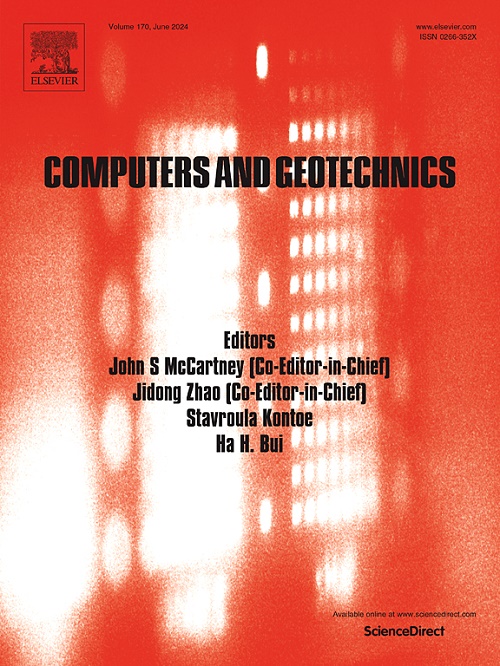Numerical investigation of fracture competitive propagation mechanisms for temporary plugging staged fracturing (TPSF) in shale gas reservoirs
IF 5.3
1区 工程技术
Q1 COMPUTER SCIENCE, INTERDISCIPLINARY APPLICATIONS
引用次数: 0
Abstract
Temporary plugging staged fracturing (TPSF) is a technique rapidly growing for enhancing the uniform growth of multiple fractures in shale gas reservoirs. However, the mechanisms of fracture competition during TPSF remain incompletely understood, primarily due to pre-existing natural fractures and stress interference. This study presents a fully coupled Finite Element Method (FEM) model incorporating the pore pressure cohesive zone method to investigate how fractures compete for growth in TPSF. Moreover, a user-defined perforation element connected to a discrete fracture network model is employed to analyze how fluid flow is partitioned. The results indicate that denser natural fractures (NFs) create more connections for hydraulic fractures (HFs), thereby increasing the complexity of the fracture network. Reduction in cluster spacing can result in distorted fracture morphologies and altered propagation pathways, potentially halting fracture growth. Higher injection rates elevate injection pressure, which may inhibit fracture growth but could aid in penetrating stress interference zones to generate asymmetrical fractures. Fractures tend to propagate towards larger inclination angles, with an inclination angle close to 45° being optimal for enhancing fracture growth and reservoir stimulation. This study offers valuable insights into the competitive propagation mechanism of fractures and provides guidance on optimal field design for TPSF.
求助全文
约1分钟内获得全文
求助全文
来源期刊

Computers and Geotechnics
地学-地球科学综合
CiteScore
9.10
自引率
15.10%
发文量
438
审稿时长
45 days
期刊介绍:
The use of computers is firmly established in geotechnical engineering and continues to grow rapidly in both engineering practice and academe. The development of advanced numerical techniques and constitutive modeling, in conjunction with rapid developments in computer hardware, enables problems to be tackled that were unthinkable even a few years ago. Computers and Geotechnics provides an up-to-date reference for engineers and researchers engaged in computer aided analysis and research in geotechnical engineering. The journal is intended for an expeditious dissemination of advanced computer applications across a broad range of geotechnical topics. Contributions on advances in numerical algorithms, computer implementation of new constitutive models and probabilistic methods are especially encouraged.
 求助内容:
求助内容: 应助结果提醒方式:
应助结果提醒方式:


